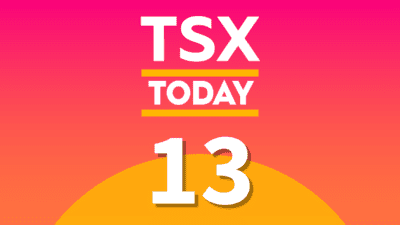The Bank of Canada raised its prime rate of interest by 1% or 100 basis points this morning. That’s the biggest jump in borrowing costs since 1998. The benchmark rate is now 2.25%. This makes borrowed capital more expensive and has a deep impact on the national economy. Here’s what investors need to know about the rate hike and what comes next.
Why are rates rising?
Central banks are raising interest rates to tame inflation. The official rate of inflation is 7.7% in Canada. In the U.S., the inflation rate crossed 9.1% in June. These are the highest rates in decades and could have devastating consequences if not controlled.
The only tool the central bank has is interest rates. By raising rates, they hope to make borrowing more difficult, which cuts demand and allows supply to catch up. Put simply, the rate hikes are designed to slow the economy down.
Will they go higher?
Despite recent rate hikes, inflation remains stubbornly high. The cost of fuel, rent, and food are all significantly higher than in 2021. This is why the Bank of Canada may have to keep raising interest rates in the near term. In fact, experts and analysts expect the bank to raise interest rates a further 0.75%, or 1%, in the next meeting on September 7.
What does this mean?
Interest rates are like gravity for all assets. Higher rates lead to lower valuations. After all, why would you buy a condo with a 2% rental yield or stock with a 3% dividend yield when Guaranteed Investment Certificates (GICs) offer 4-5% fixed rates?
Higher interest rates also negatively impact home prices. Homeowners with too much leverage could see their mortgage rates rise rapidly in 2022. Meanwhile, higher rates reduce purchasing power and reduce the number of buyers in the market, leading to lower home prices across the country.
Finally, higher rates are bad for companies with too much debt. The rising cost of servicing this debt could push some companies to the brink of bankruptcy.
Where to invest?
To protect your wealth during this tumultuous year you could focus on high-quality businesses with pricing power and low debt. Canadian Natural Resources (TSX:CNQ)(NYSE:CNQ) is a prime example. The oil and gas producer should see robust earnings throughout 2022, as the price of energy remains elevated. Meanwhile, the company has little debt on its books. The debt-to-equity ratio is just 40%.
The company expects to reduce debt further. Net debt could drop from $13.8 billion to $8 billion by the end of 2022 or early 2023. After that, CNQ’s management team hopes to divert more cash to shareholders in the form of dividends and share buybacks. At the moment, the stock already offers a 4.9% dividend yield.
Put simply, if the price of oil remains above or around $100, CNQ and other oil stocks could see a substantial upswing. Keep an eye on this opportunity as rates rise.







